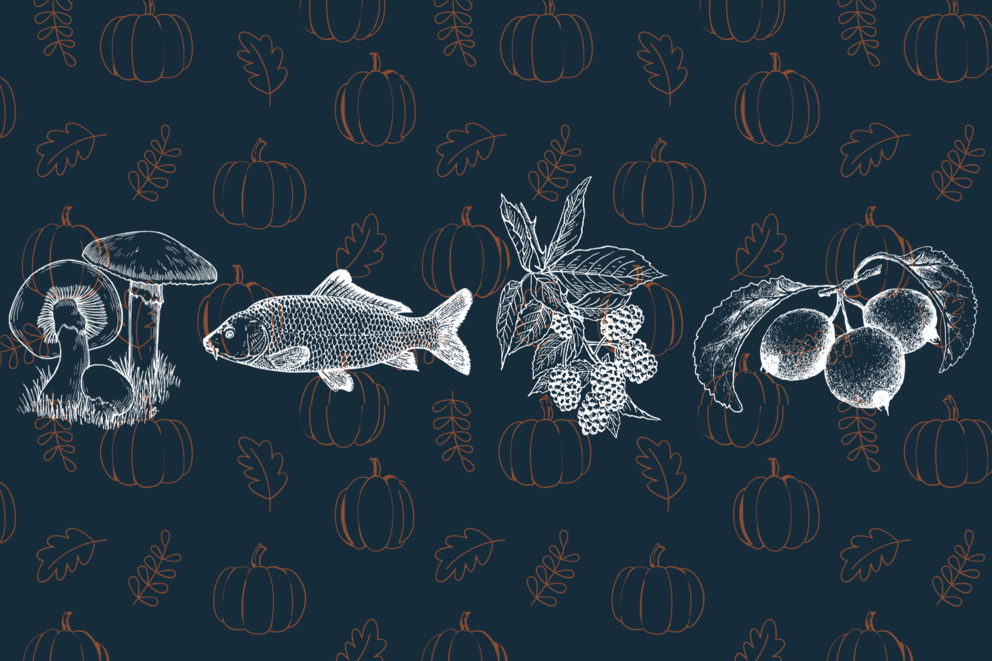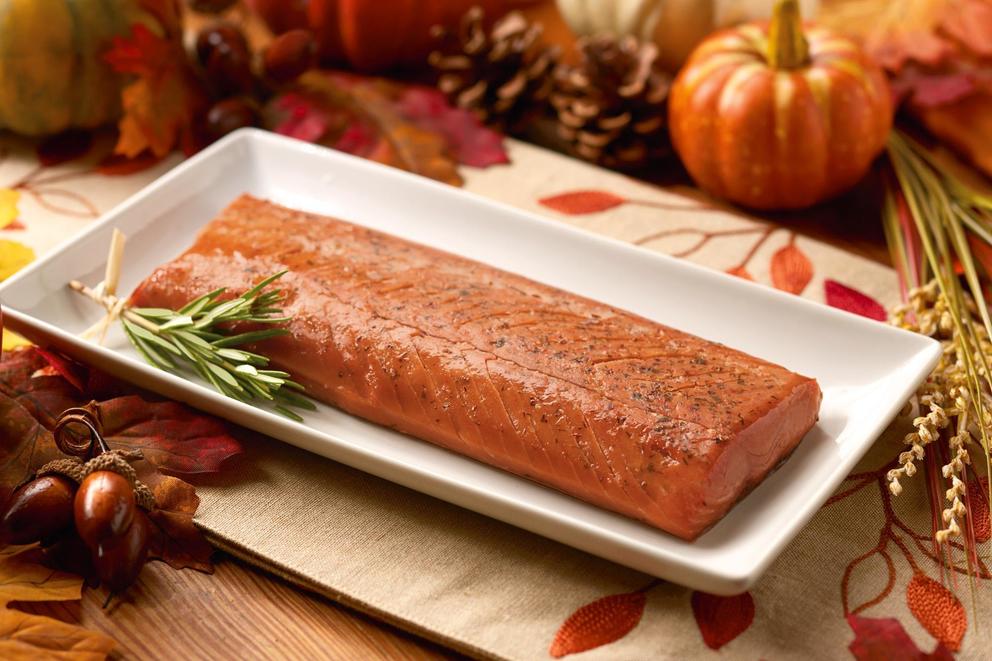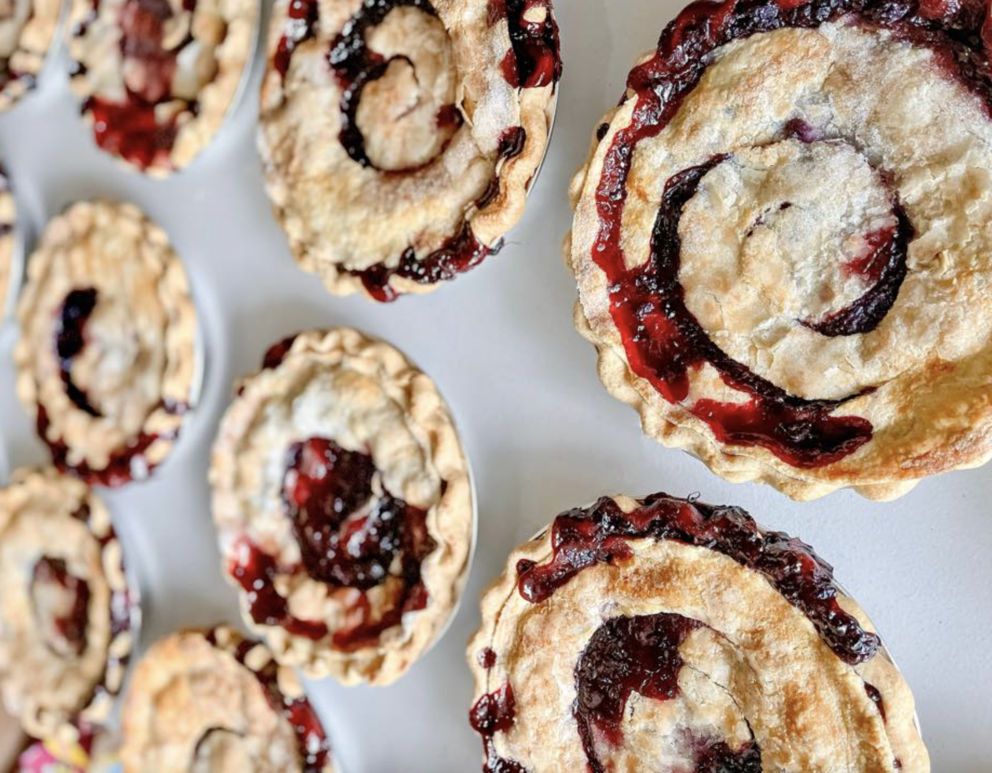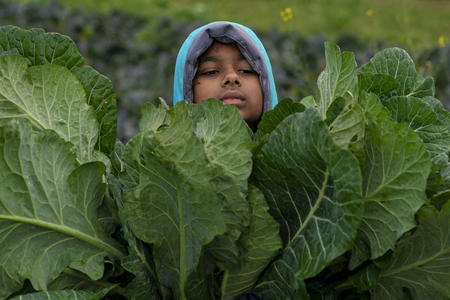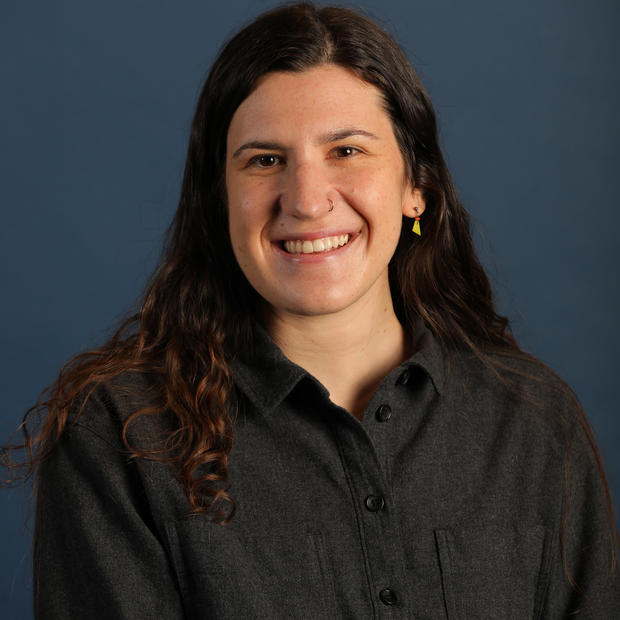Indigenous tribes called the Americas home long before the first white settlers arrived, and the history of Thanksgiving is less amicable – and much bloodier – than what gets taught in schools. While the Thanksgiving feast is a myth, local foods can provide a gateway to learn about the region’s environment and history.
More than 280 plants, animals, fish and marine life across the Puget Sound region are used in traditional Coastal Salish diets, according to the University of Washington’s Burke Museum. Some of the traditional “First Foods” have remained staples in the Northwest, but others have fallen out of modern cuisines after colonizers forcefully displaced Indigenous peoples and disrupted the dietary systems, traditions and knowledge that tribes had developed for millennia.
As you head into the kitchen, here are a few ways to incorporate local Pacific Northwest foods into your Thanksgiving feast.
Crabapple Jelly
This year, skip the canned cranberry sauce for a homemade jelly using one of Washington’s most iconic foods. Well, sort of iconic. Washington is an apple powerhouse, with an expected harvest of over 5,360 million pounds this season. But none of the glossy varieties lining grocery shelves are native to the Pacific Northwest. Before the first orchard was planted by settlers 200 years ago, the only apple found in Washington was a single species of crabapple.
The Pacific crabapple tree (malus fusca) produces a sour fruit that looks a lot like a cherry. Unsuited to the combination of lava soil and arid climate east of the Cascades that is ideal for modern orchards, the Pacific crabapple thrives in wet habitats like coastal coniferous forests and wetlands.
Crabapples were a traditional food for the Indigenous peoples living in what is now Washington and British Columbia. The Quileute word for crabapple – siyoy9xnidax – translates to “hurts the tongue.” Some communities preferred crabapples raw, while others cooked, mashed or preserved the fruit to eat alone or with seafood.
Smoked Salmon
As guests arrive and the turkey is cooking, it’s common to have appetizers out as a holdover – or pre-meal – to the Thanksgiving feast. Alongside the cheese platters and veggie trays, smoked salmon is a way to bring the heart of the Puget Sound to the heart of your home.
Salmon is integral to the culture, economy and diet of many Pacific Northwest Native nations from Oregon to British Columbia. Considered one of the “First Foods” alongside roots, berries and water, the salmon is revered for offering his body to the Creator to feed people. Columbia River Basin tribes refer to themselves as Wy-Kan-Ush-Pum, or “Salmon People” in Sahaptin. While traditions for catching, curing and preparing salmon differ among tribes, commonly the salmon is hung in a ceremonial smokehouse or skewered over open-pit fires.
For the holiday, SeaBear Smokehouse in Anacortes is selling its 10th annual Thanksgiving Smoked Salmon made with a wild Alaska Coho center-cut loin, a one-time specialty for the smokehouse. The cut comes ready to serve and incorporates seasonal herbs and spices. Salmon can help complement the main course or be plated “for when the turkey’s in the oven and the family’s gathering,” said President and CEO Mike Mondello.
“It’s not meant to be a replacement for Thanksgiving dinner,” said Mondello. “It’s meant to be what you put out and enjoy while everyone is having a drink and waiting for the turkey to be ready or after dinner, watching football games.”
SeaBear – named after the Kwakwa̱ka̱ʼwakw or Kwakiutl mythological creature – started as a backyard smokehouse by Tim and Marie Savidge and has now grown to deliver across the nation. In 2017, Mayor Laurie Gere declared July 29 “SeaBear Day” in Anacortes.
Mondello suggests serving smoked salmon as is with any preferred cheese such as brie, goat cheese or his go-to pairing, sharp cheddar. Add fruits, crackers and spread (such as the crabapple jelly) to complete the plate. The fish can also be incorporated into smoked salmon roll-ups or a cheese log for pre-dinner grazing.
Mushrooms
This Thanksgiving, Pacific Northwest home cooks can bring savory local flavors to their holiday tables by incorporating Seattle-grown mushrooms into traditional dishes or concocting brand-new mushroom-centric recipes.
For thousands of years Coast Salish and Quinault peoples harvested wild mushrooms like chanterelles, morels and oysters. These mushrooms can be found growing in the shady, dark forests of the Seattle region around Whidbey Island and Snohomish County. Now, local farms, like Marrowstone Mushrooms, are cultivating varieties of woodland mushrooms and distributing them across the Puget Sound region to households and restaurants.
Seattle’s Marrowstone Mushrooms grows about 600 pounds of wood-based mushrooms within the city limits each week. Owner Ben Jaffe recommends mixing multiple varieties to increase the depth of flavors when making dishes like cream of mushroom soup or adding them to a stuffing.
For an impressive Thanksgiving centerpiece, Jaffe slow-cooks a whole Lion’s Mane mushroom like a brisket, braising it in a barbecue sauce base. But Jaffe’s secret to developing flavor and texture is letting it refrigerate overnight. Sliced and heated, it shines as a vegetarian main.
Aside from plant-based mains, mushrooms are easily incorporated into appetizers, sides and traditional dishes. “Mushrooms pair well with almost any Thanksgiving dish,” Jaffe said. Wild varieties like chanterelles can amplify the flavor of classic stuffing, and a cream of mushroom soup made with a blend of local mushrooms can make a delicious starter or a classic addition to a green bean casserole.
Seeking regional mushrooms at farmers markets, through home delivery services or directly from local farms provides opportunities to support sustainable agriculture. In Jaffe’s view, “If you haven’t eaten mushrooms this week, consider buying some mushrooms and eating some mushrooms. They’re good for you, and you’re supporting a better world.”
Here is Jaffe’s go-to recipe for a simple mushroom satay or gravy.
Marionberry Pie
What’s Thanksgiving without pie? Though apple and pumpkin typically reign supreme during this holiday, try adding a twist to your dinner spread by letting the Pacific Northwest marionberry shine instead.
The marionberry looks just like the blackberry, but while the common blackberry has existed for a long time (Indigenous communities used them as food, medicine and dye for crafts), the marionberry was created in the 1940s at Oregon State University. Yes, created — it’s a hybrid of the Chehalem blackberry and the olallieberry and originated in Marion County, Oregon (hence its name).
Marionberries are grown exclusively in Oregon and known as a summer fruit, harvested in mid-July. In 2017, Oregon made marionberry pie the state’s official pie.
The marionberry is known for its balance of sweet and sour, with an earthy sweetness. While its flavor shines, it’s quite fragile and does not travel well, which is why it’s not widely known outside of the Pacific Northwest. They still work great as a pie filling; they just need to be treated with extra care, notes the owner of Rumbly in my Tumbly Pie Company, Shannon McDowell. Her Lynnwood shop won Best Dessert in KING 5’s 2023 Best of Western Washington competition, voted by viewers.
For McDowell, who started her pre-order pie shop officially in 2021, the marionberry shines on its own.
“Marionberries are one of the very few berries where you just don’t have to add anything,” McDowell said. “So many berries you have to add a little bit of lemon zest or cinnamon or something to it to make it stand out, but I don’t add anything to marionberry because the flavor’s just so good.”
To make marionberry pie, you need frozen marionberries, but McDowell warns that they can’t be found in normal grocery stores. She recommends going to a CHEF’STORE or sourcing them from a local farm, such as Remlinger Farms in Carnation. After getting the frozen berries, McDowell defrosts them in the fridge overnight and then drains the excess juice.
The key to any pie, according to McDowell, is a good handmade crust.
“It’s something that anybody can do if they just follow directions and practice a little bit. It’s a fairly simple thing to do,” McDowell said. “It has to be made by hand. If you buy the Pillsbury stuff or the stuff that’s store-bought, it’s never as good. So to me, that’s the key to good pies. The whole thing is the crust … nobody just wants to eat pie filling.”
Here is McDowell’s recipe for a flaky marionberry pie.
Get the best stories of the week
This weekly newsletter dives deeper into one story and how it was reported, along with curating the best stories of the week.

